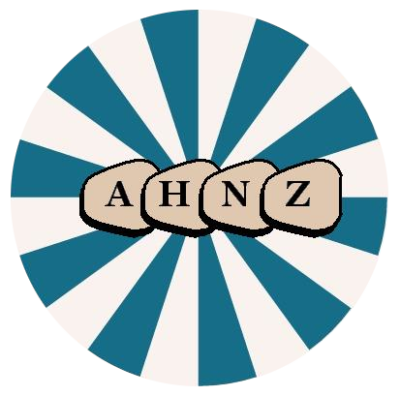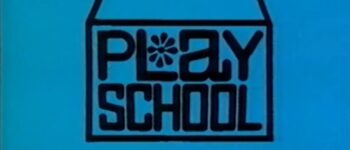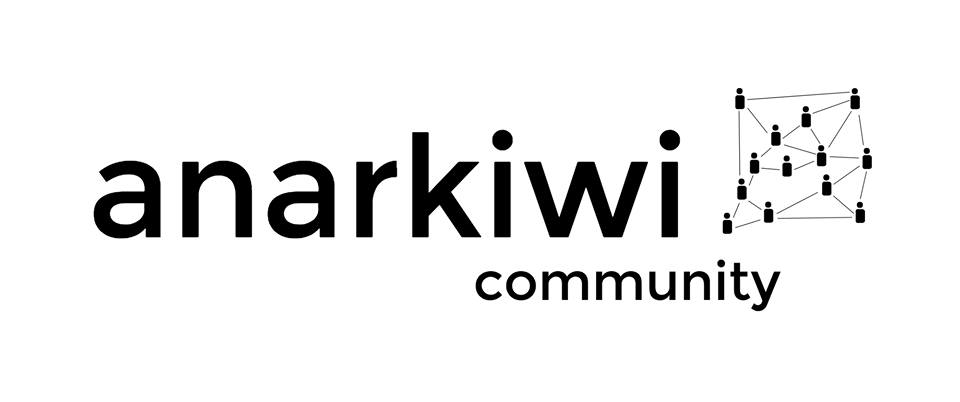1972: Play School
November 27, 2021
By AHNZ
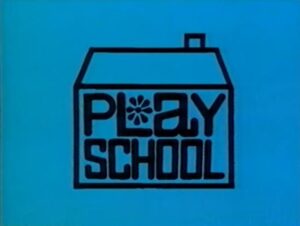
Play School first aired in New Zealand on what would become TVNZ from 22 March, 1972, and ran all the way up to 1990. It was a show for Generation X and early Millennials. The format was heavily based on the British show of the same name including the suit of toys props which were: Big Ted, Little Ted, Manu, Jemima, and Humpty.
The heredity of Manu the Maori doll is interesting. She started out as a white British doll named Hamble, a lower-class and downtrodden totem. The British succeeded this doll with a little brown doll named Poppy while in New Zealand she became a brown Maori doll named Manu. Meanwhile, in Australia, Hamble lasted on to 1993 before being succeeded, it seems, by an Asian doll and her name is Meeka.
Australian Play School is still being produced today but the BBC version was cancelled in 1988. Finding out that Play School was never just ours, never just a New Zealand ‘Kiwiana’ was, for me, just about as confronting as finding out the same of Weetbix. On a more optimistic point of view it does make us one big inter-connected Commonwealth of 3 nations that shared something.
Given the company of Play School in 1990 it was for the best that it disbanded. During the wrap party for the end of Play School some drunken individuals desecrated one of Little Ted’s incarnations by blowing off his head with an explosive. A disgraceful way to treat a beloved icon of New Zealand children for 18 years and a betrayal of trust on the part of everyone present. Headless Little Ted is the only figure missing from the collection fit for display at the Museum of New Zealand. However, apparently there’s another incarnation of Little Ted at large that never made it to the museum1.
Build It Up
I watched this clip live when I was very little, “Build it up, build it up, build it high. Build it up, up, up into the sky.” As a grown up I’ve passed it on to other little kids in my care without them having a clue where it came from. I could only have given my word that it came from ‘Play School’ (1980) until New Zealand on Screen came along and published the video.
As it turns out, the lyrics are claimed by Abigail Jane Cotton and Anna Ruth Scantlebury. If TVNZ were ripping off someone’s intellectual property back in 1980 it wouldn’t be a great surprise. School Journal did that to Rudyard Kipling in 1915 and were discovered. Our Government has never had much respect for property rights.
Barry and Jacqui were *my* Play School presenters and probably first attachment to anybody on TV. (Later, I also remember Rawiri Paratene doing a bit involving puddles made out of blue paper. I was impressed as a little kid that Rawiri commented that the 2D paper puddles must be very shallow, thus allowing me to hold on to my Suspension of Disbelief.)
Build it up,
Build it up,
Build it high.
Build it up, up, up,
into the sky.
Build it up,
Build it up,
Build it higher.
Build it up, up, up into the sky.
Now if you get the construction feeling,
You can build a castle right up to the ceiling.
And if you think that building is fun,
You can build a castle right up to the sun.
Jacqui became a MHR in 2005 for the National Party. Apparently fellow MP Simon Bridges said something mean in proximity to my old Play School presenter in 2016.
Waitaki MP Jacqui Dean says she was surprised and disappointed a conversation she had with now former party leader Judith Collins some weeks ago was this week used by Ms Collins to dismiss and demote Tauranga MP Simon Bridges.” – ‘Not my intention’: Dean disappointed by Collins’ move against Bridges, ODT (November, 2021)
Someone built it up, built it up, built it up into the sky and now, in 2021, it’s big enough to turn Jacqui and Simon’s, and their friend Judith’s, party into a real mess!
Incidentally, Rawiri’s daughter, Marama Davidson, is also in Parliament alongside Jacqui Dean. More about that in a future post covering Nga Tamatoa.
[Update 2025…]
The Play School Clock
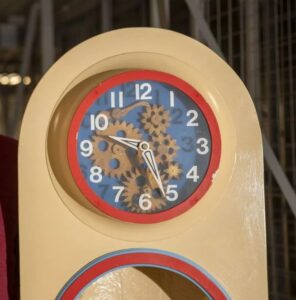 The show moved to Dunedin in its first year and when it ended their iconic clock was liquidated.
The show moved to Dunedin in its first year and when it ended their iconic clock was liquidated.
Waikiwi Kindergarten purchased it at a TVNZ auction and later donated it to Invercargill Public Library. After a while they put it into storage until it re-emerged in 2009.
“The kindergarten bought it at a TVNZ auction and kept it at the Durham St preschool for several years, using it as a logo in newsletters.” – Southland Times (2009)
Supposedly it is going to the Museum of New Zealand but probably not. Doesn’t quite fit in with the two kinds of history they show there: Māori and Pasifika. The location, as of 2024, was still with the Invercargill Library according to the Press.
Attunement
New Zealand’s new children’s show was pitched as a way to teach children as if in nursery school. Supposedly based on leading authority in paediatric psychology, it claimed to offer the child “undivided attention.” At least, for twice a week. But later, it was twice every week day.
That is exactly what the format had these presenters do. All actors by profession, their future jobs included Whale Rider, Star Wars, Shortland Street, and national politics. The connection offered to generations of our nation’s youth was a scripted performance. A simulation of really being in the room. A Parasocial relationship: ‘A one-sided, imagined connection or bond that a person develops with a media figure, celebrity, or fictional character, where they feel they know the person intimately, even though the relationship is not reciprocal.’
“”Play School” is the nursery school of the air — a programme that uses the advantages of television to do the job of teaching children of pre-school age in its own exciting way. In their own homes children can benefit from the advice of leading authorities on nursery education, and enjoy the undivided attention of a changing panel of presenters: young and resourceful men and women,” – Press (1972,) Papers Past
“The presenters were almost all professional actors, as they were required to memorise and perform 2 and a half hours of script per week” – NZ on Screen
“…the “double TV experiment,” in which infants and mothers interacted via a closed-circuit television system. In separate rooms, infant and mother observed each other and, on “live feed,” communicated by means of the universal infant-mother language: gestures, sounds, smiles, facial expressions. The infants were happy during this phase of the experiment. “When the infants were unknowingly replayed the ‘happy responses’ from the mother recorded from the prior minute,” writes the UCLA child psychiatrist Daniel J. Siegel, “they still became as profoundly distressed as infants do in the classic ‘flat face’ experiments in which mothers-in-person gave no facial emotional response to their infant’s bid for attunement.”
“Attunement does not mean mechanically imitating the infant. It cannot be simulated, even with the best of goodwill. As we all know, there are differences between a real smile and a staged smile. The muscles of smiling are exactly the same in each case, but the signals that set the smile muscles to work do not come from the same centers in the brain. As a consequence, those muscles respond differently to the signals, depending on their origin. This is why only very good actors can mimic a genuine, heartfelt smile. The attunement process is far too subtle to be maintained by a simple act of will on the part of the parent. Infants, particularly sensitive infants, intuit the difference between a parent’s real psychological states and her attempts to soothe and protect the infant by means of feigned emotional expressions. A loving parent who is feeling depressed or anxious may try to hide that fact from the infant, but the effort is futile. In fact, it is much easier to fool an adult with forced emotion than a baby. The emotional sensory radar of the infant has not yet been scrambled.” – Scattered Minds, Gabor Mate (1999)
I can’t get behind that show pitch. Children need their parents’ attending behavior so their attunement needs can be met. A pre-recorded face in a box is not giving your child “undivided attention” at all.
Older generations probably did try to resist the new-fangled TV show at the time but would have been dismissed as behind the times. To the Baby Boomers now running New Zealand nothing was missing. After all, hadn’t they grown up in factory conditions? Deprived of serotonin, wheeled about in bins by government workers? Mothers relegated to brief service as milk dispensary machines! So, anti-attunement television like this would have sounded no warning bells to the Boomer. Ref. No serotonin for you, Boomer!, AHNZ
Yet, as Gabor Mate wrote in Scattered Minds (1999) it takes a very good actor just to mimic a genuine smile. Even so, it is mimicry not authenticity. That’s OK for a matured brain but even 1 hour a day will malattune infants. After all, the two 30min slots of Play School per day were directed to make an impact on these kids’ brains so we’re only speaking here of what sort of impact that was. Benevolent or malevolent? As in the case of Punch and Judy (modeling family domestic abuse for generations) all is not as it seems. Ref. 1843: First Punch and Judy in NZ, AHNZ
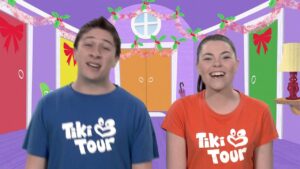 This same Parasocial relationship in Play School was picked up and ran to the goalposts even harder with later shows like Blues Clue’s (1996) and New Zealand’s own Tiki Tour (2011.) This ensured that Zoomers would join the prior generations of Generation X and Millennial in having their attunement matrices boggled.
This same Parasocial relationship in Play School was picked up and ran to the goalposts even harder with later shows like Blues Clue’s (1996) and New Zealand’s own Tiki Tour (2011.) This ensured that Zoomers would join the prior generations of Generation X and Millennial in having their attunement matrices boggled.
Fast-forward to 2020s and these grown-up kids are deeply enmeshed in parasocial relationships with celebrities on screen. Youtube and Tiktok streams, reels, etc. turn views into revenue for those who can mimic a relationship. The Kardashians, Mr Beast, PewDiePie, and all the social media influencers idolised are simply capitalising on the groundwork laid by this old government TV show, Play School. Those who didn’t have their brains put in a SNAFU state by the government programming probably are not “doom-scrolling” on microscopic attention spans. Or, trying to be mates with ultimate kindergarten-level TV personality Jacinda Ardern and her jabby toys you could play with at home.
Priming young minds for the Parasocial is not even the end of it. Consider the subset: Parasexual. The Play School, Blues Clues, The Wiggles, Tiki Tour style of directly addressing a kid also inform their patterns of gender and sexual identity. Here in the 2020s many of those infants have grown up with a strong attachment to paying services like OnlyFans, Instagram, etc. where money is exchanged for simulated sexual content. Older generations, or the un-indoctrinated, are baffled that younger people are paying billions of dollars for the illusion of having a sexual relationship with fake personalities they must share with millions of others and who cannot even acknowledge their existence. This Parasexual relationship displaces the drive to form healthy pair bonds with a real life, unfiltered, romantic partner and propagate the New Zealand species. The demographic groups who do remember to procreate, generally immigrants, will inherit the world.
In conclusion, Play School caused the apocalypse and we are doomed.
—
Image ref. Play School clock. Kavinda Herath, The Southland Times (2024)
Ref. Play School – Presenter Compilation, NZ on Screen
 Like Comment Share
Like Comment Share
